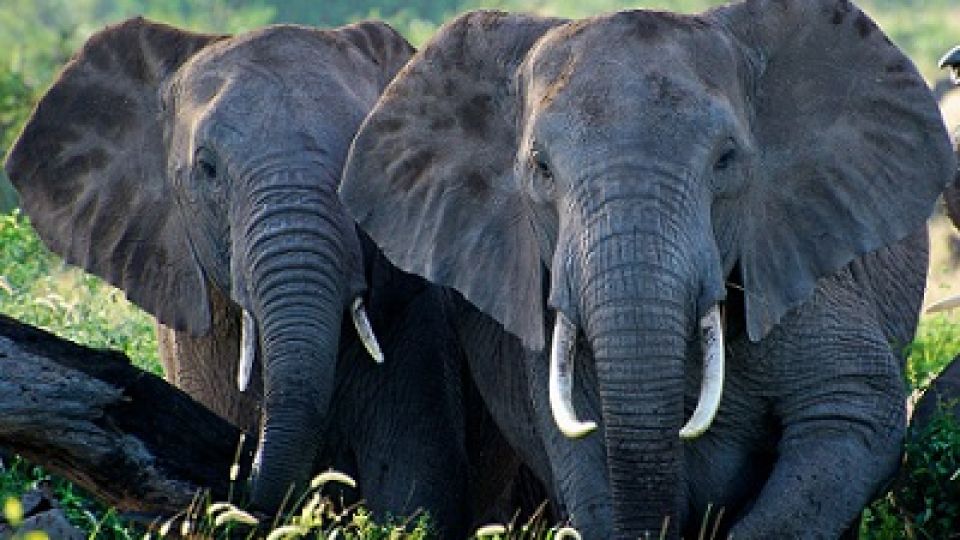by MTHULISI SIBANDA
Africa Editor
JOHANNESBURG, (CAJ News) – THE desert-adapted elephants of Namibia are the epitome of survival.
They exist in the world’s oldest desert, which is one of the driest places on the planet. They have endured poachers as well as a two-decade and-a-half long liberation war.
Unlike fellow species, including those traversing the African savannah, the continent’s rain forests and those in Asia, the jumbos habitating the Namib Desert have for years also been uniquely exempt from human-wildlife conflict.
The population of the desert-adapted elephants of the Namib is around 150. It is estimated they numbered 300 at peak.
Climate change has emerged as the biggest threat to their existence, a grim reality of the impact of the long-term shifts in temperatures and weather patterns.
“Their future is under threat,” Hendrick Munembone, the Namibian-based researcher, tracker and conservationist, lamented in an interview with CAJ News Africa.
He spoke exclusively to this CAJ News Africa ahead of the just-commemorated Earth Day.
The desert-adapted elephants form part of a documentary, “Secrets of the Elephants.”
The four-part series reveals the extraordinary lives of different families of elephants and highlights how similar they are to humans.
Arguably the most resilient, like humans, the desert-adapted elephants are bearing the brunt of climate change, which in the Namib Desert manifests itself in drought. Sandstorms and even floods are a threat.
Parts of the desert are some of the driest places on earth, making the Namib the toughest place on the planet to be an elephant.
“As they live in riverbeds, climate change is really affecting them,” Munembone, who has studied elephants for over 25 years, said in the interview.
“In the areas where they live, rivers flow from far away. Also, if the area doesn’t receive any drop of rain… there is a need for rivers to flow to keep the riverbed wet and the surroundings green for a period of time,” he continued.
“With less and less rain, this water may not come through. The riverbed is becoming narrower and the vegetation is dying,” Munembone explained.
He said this impact of climate change and subsequent droughts were now triggering human-wildlife conflict, which the desert-adapted elephants had not been victim to before in previous years.
“This (climate change) will affect them, until they try leaving this area in search of better areas, especially in the rainy season,” the expert said.
“They (elephants) move away out of their home range just for better vegetation, resulting in them meeting new neighbours…people that include commercial, sensitive farmers who have never lived with elephants. The increasing drought is worsening the suffering of these animals,” Munembone expressed concern.
One of the driest countries in Sub-Saharan Africa, Namibia is experiencing an acute drought. The conditions have existed for more than seven years.
Meanwhile, there has been a spate of elephant shootings, with poaching ruled out.
“The elephants face a challenge of people just shooting them and not wanting them on their land,” Munembone said.
“They are shot when they leave the desert in search of better vegetation in human-occupied areas. Some are shot and die after kilometers from where the shootings occur.”
The expert reiterated that poachers were not the perpetrators.
“At the moment, not really, even with the rhino as well. Law enforcement in our country has done well,” he said.
Another issue of concern is the high calf mortality levels.
“Sometimes, it takes nine to ten years before the next calf survives. Most of them die before they reach the third month,” Munembone said.
Elephants are pregnant for 22 months, the longest gestation period of any mammal.
Some deaths have been suspected to be from the Salmonella and herpes virus. Some of the illnesses are partly blamed on the stress endured by the largest land mammals on earth.
“They then pass it (illness) to the newborns,” Munembone said.
A director on the Elephant Human Relations Aid project, he grew up in the northwestern Kunene region, bordering Angola.
He retold how the desert-adapted elephants survived the heavy hunting that took place in Angola and how they were exposed to the South African Border War (1966 to 1990) upon trekking to Namibia.
“They suffered all this. They are survivors and happy to live in there (desert). They easily adapt to any situation approaching them,” Munembone said.
– CAJ News

